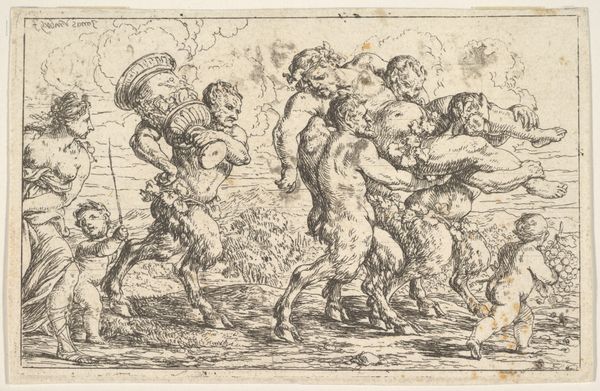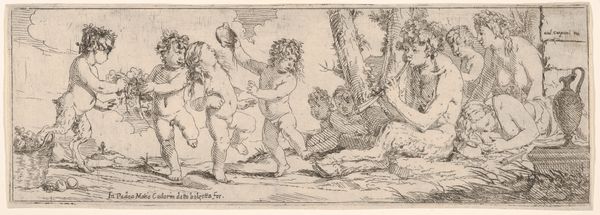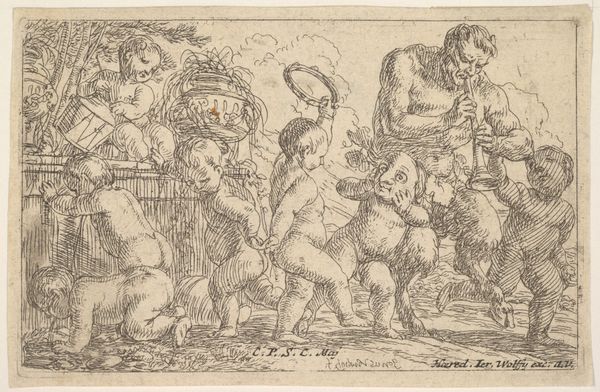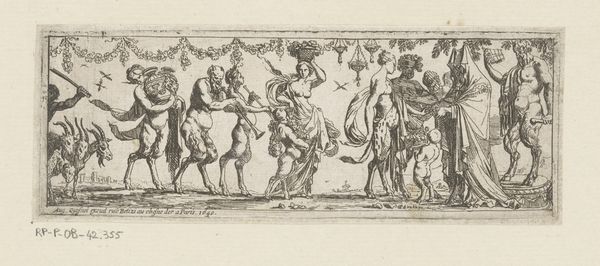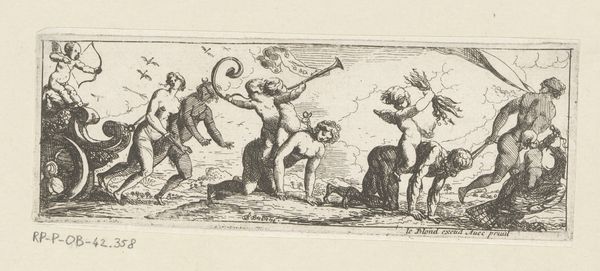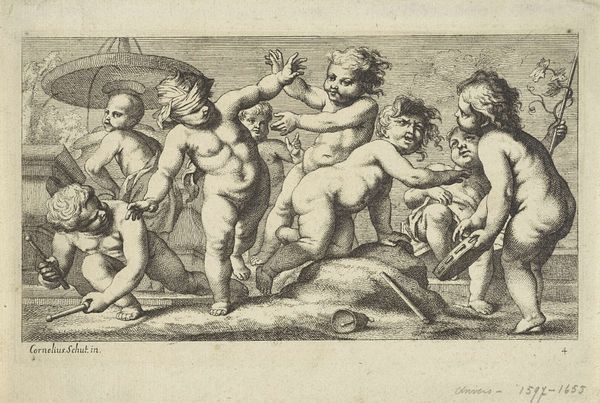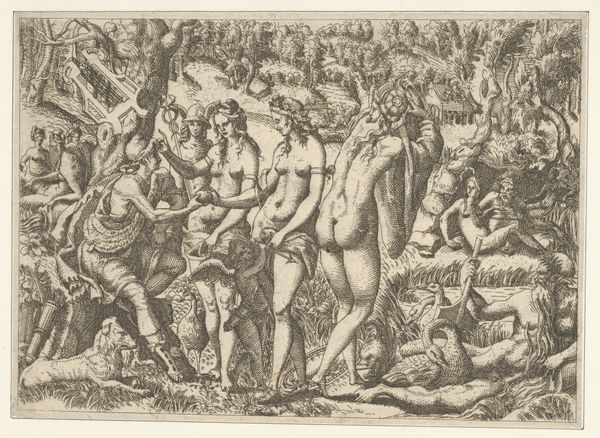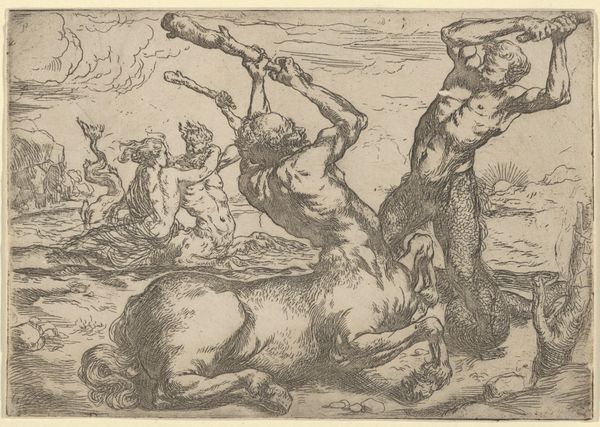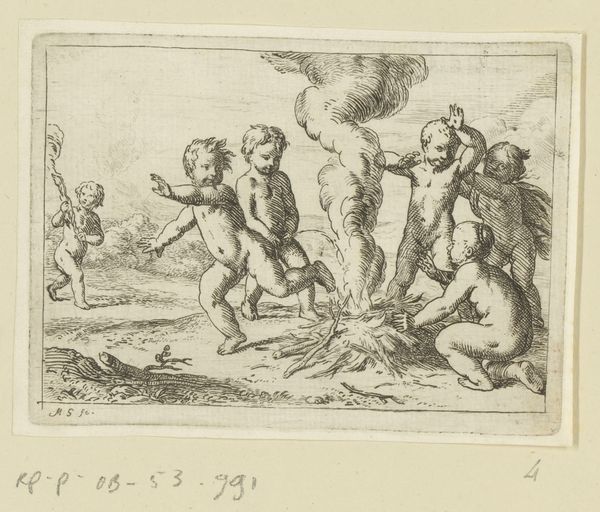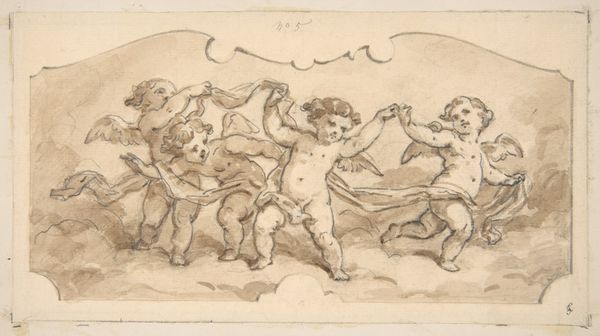
print, etching
#
allegory
#
baroque
# print
#
pen sketch
#
etching
#
figuration
Dimensions: height 143 mm, width 343 mm
Copyright: Rijks Museum: Open Domain
Curator: Let’s talk about "Bacchantische optocht met putti," or "Bacchanal with Putti", an etching by Pierre Brebiette, likely created between 1608 and 1650, here at the Rijksmuseum. Editor: It feels instantly joyful and chaotic. Look at the cherubic figures, the implied movement. It’s like a little riot of fleshy forms and playful activity all squeezed into this compact print. Curator: Brebiette really understood the possibilities inherent in etching as a process. The relative ease with which you can create lines—hatching, cross-hatching—it's all masterfully handled to suggest texture, light, and movement. The very *act* of printmaking allowed for wide distribution of this playful scene to other workshops. Editor: Those "putti" are significant! They are classical motifs adapted by the Renaissance, symbols of innocence and divine love...but here, associated with Bacchus. This gives them a twist. The grape leaves, the goblet—all speak to a celebration of sensual experience, challenging a purely religious interpretation. It hints at a fascinating negotiation of earthly pleasures and spiritual ideals, and what that meant in Brebiette's time. Curator: Absolutely. The materials themselves speak to that tension. Consider the contrast between the precious metal of the plate and the everyday object produced from it – a print meant for circulation, perhaps pasted into a scrapbook, a commodity of visual delight. Editor: What I find powerful is how he collapses seemingly contradictory concepts into a cohesive visual narrative. There's innocence and wildness, control in the etching process and a celebration of uninhibited behavior within the scene. Curator: And that dichotomy extends to how it functioned in its time. An embrace of both artistic skill *and* commercial appeal—a complex dance of production and consumption. Editor: It really offers a vibrant visual feast—a memory of symbols of rebirth and joy that resonate even today. Curator: Exactly—revealing much about artistry and society, both past and present, and leaving us plenty to consider long after our encounter.
Comments
No comments
Be the first to comment and join the conversation on the ultimate creative platform.
